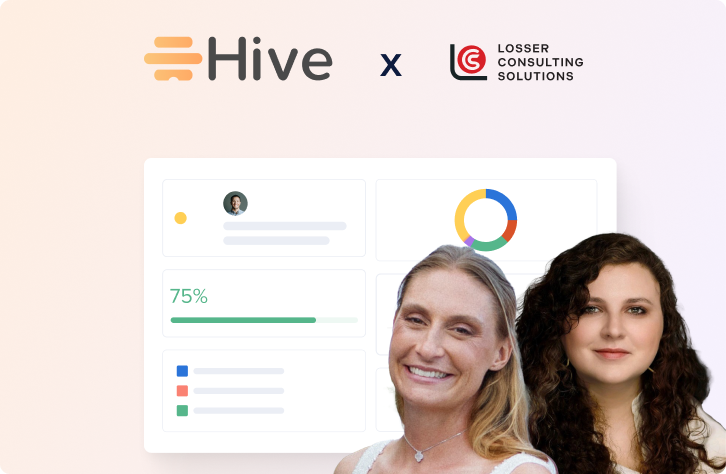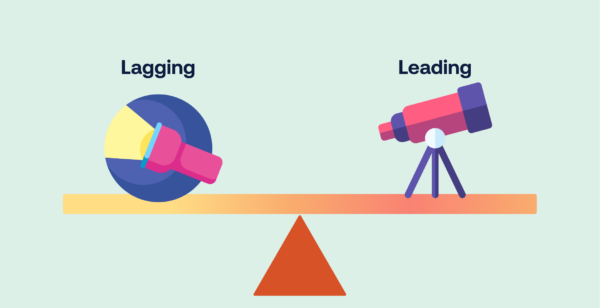You can’t reach your goals without properly measuring performance. And you can’t properly measure performance without focusing on the right KPIs. Enter leading and lagging indicators, two types of metrics that should be on your radar.
The difference between leading and lagging indicators
“Think about leading indicators of predictive measures that provide insight into future performance, while lagging indicators are retrospective measures that indicate past performance,” says Benjamin Talin, CEO & Founder of MoreThanDigital. “Leading indicators can help identify potential problems or opportunities i.e., how many leads you generate, while lagging indicators help evaluate the effectiveness of past actions i.e., how many customers you converted from leads.”
If you want to assess how your team or company may perform in the future to optimize your strategies, you need to identify and track leading indicators. “These indicators can be used to predict possible outcomes because they are often measured before an event or activity takes place,” says Sara Sharp, Mergers and Acquisition attorney and founder of SK&S Law Group and Acta Tax Consulting.
If you want to assess how your team or company performed in the past and learn from previous actions and outcomes, you need to identify and track lagging indicators. “These indicators can be used to assess the success or failure of an effort and are normally monitored after an event or activity has taken place,” adds Sharp.
The importance of tracking leading and lagging indicators
According to Sharp, leaders should be aware of both leading and lagging indicators since each type of statistic offers insightful data on different aspects of the company or organization:
“While lagging indicators can offer a retrospective picture of performance and help assess the success of prior strategies and initiatives, leading indicators can help anticipate possible issues and opportunities before they exist.” In a business world that moves fast and changes all the time, monitoring these indicators provides crucial information for decision-making.
As Talin puts it, being aware of both types of metrics allows you to “proactively manage performance.” And it has the bonus effect of forcing you to focus on the most important KPIs, which enables you and your team to become more data and insights-driven.
How to track both leading and lagging indicators
Ready to identify and start tracking your own leading and lagging indicators? First, it’s important to consider the larger business priorities at play – what does success look like in your organization? Are there key KPIs that all teams in the organization support through their respective efforts? Is there an outcome that, if achieved, will have a domino effect on all your other desired outcomes? Understanding what matters the most is the first step to choosing the leading and lagging indicators to keep an eye on.
Once you have your metrics, use a dashboard like Hive Analytics to automate performance tracking and data reporting. For example, you can spot late tasks, resourcing issues, budget concerns, and more before they put a wrench in an important project – all leading indicators. Or you can analyze how much time you spent on each portion of the project after the fact to make better resource-management decisions moving forward – a lagging indicator.
Examples of leading and lagging indicators
If you’re looking for inspiration around what leading and lagging indicators can look like, Sharp used the example of a law business to illustrate them: “Leading indicators for a law business could include things like how many new client consultations are planned, how many recommendations are given, or how many online searches about the law are made.” On the other hand, the number of cases won, the amount of money made over a certain period, or the level of client satisfaction are a few examples of lagging indicators for law practice.
Prominent examples of leading indicators include sales-related metrics such as the number of leads, or social media engagement stats like the number of impressions, adds Talin. “Examples of lagging indicators include revenue, Net Promoter Score (NPS), profit margin, and employee turnover rates,” he adds. Another indicator to take in consideration is Transactional Net Promoter Score (TNPS), a methodology organizations use to survey customers following a transaction or interaction with a brand.
It all depends on the nature of your industry and team, but you should now be well-equipped to determine what those indicators are for you – and track them so you can make better strategic choices.


